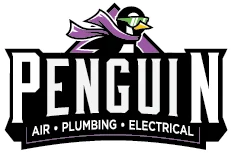So you’ve got a new home, and you’re looking for ways to begin this new adventure with energy savings. Over the years, you’ve been in homes where your energy bills were sky high, and you don’t want it to happen this time. Besides some basic heating maintenance tips for homes of all ages, we’ve got tips for you to have superior heating and great energy savings with your brand new home. It’s the middle of winter, and you want to cut those energy bills in half before they even start piling up. Take a look below at a few heating tips for your new home:
1. Check for Leaks
For a return on your investment, check the doors and windows. Your home is new, but that doesn’t mean it’s flawless. There are few little investments you can make now to ensure that your home is energy efficient as time goes on. Did you know that around 10% of your home’s heat loss is because of leaky windows and doors? Look at your windows and doors and see if they need weatherstripping or caulking. Weatherstripping the areas around windows or doors can save your furnace from working too hard as warm air leaks out. Remember – weatherstripping needs to be replaced every few years. Take a note now and in 5 years, go back and inspect your doors and windows again.
The same principle applies to the threshold under each door. If the threshold under your doors has a gap, try to adjust it so that it lifts up and closes any places air can escape. Remember not to raise the threshold so much it’s difficult to move the door.
2. Check for Drafts Around Outlets
Oftentimes, air escapes through cracks around outlets or electrical boxes because there’s not enough insulation around these devices. Remove the outlet and fill small gaps or pockets with caulking to seal up the area behind the faceplate. These little gaps seem small, but think of how many outlets are in your home and how many places air has to escape.
3. Purchase Plastic Film
Heat often escapes through windows. Covering windows with plastic film can stop this from happening. Plastic film is inexpensive and easy to install. It also comes off easily if you wish to remove it in the spring. Remember to cover any glass sliding doors, as well.
4. Insulate
Your new home should be properly insulated, but there are some places where insulation isn’t common to install or where it is weak. Some professionals recommend insulating the attic access door, as this is an area that isn’t commonly insulated fully and therefore where warm air tends to escape. You want to make sure your attic access door is sealed when shut and properly insulated on the other side.
5. Programmable Thermostats
Programmable thermostats are a great idea because they allow you to control when and where your heating system is working. When no one is home, you can program the thermostat to keep the house cooler than you would when people begin coming home at the end of the day. Turning the thermostat back around 10 degrees every day can save you around 10% on your yearly energy bills.
You just made a big investment on your new home, and you want to start everything off right. Get into the habit of saving energy now, and you will reap the rewards in a couple year’s time. Remember to consult your local heating expert before making any of these changes, or have your local heating expert do an inspection of your new heating system to see how it’s going to perform and what you can do to remain energy conscious.
